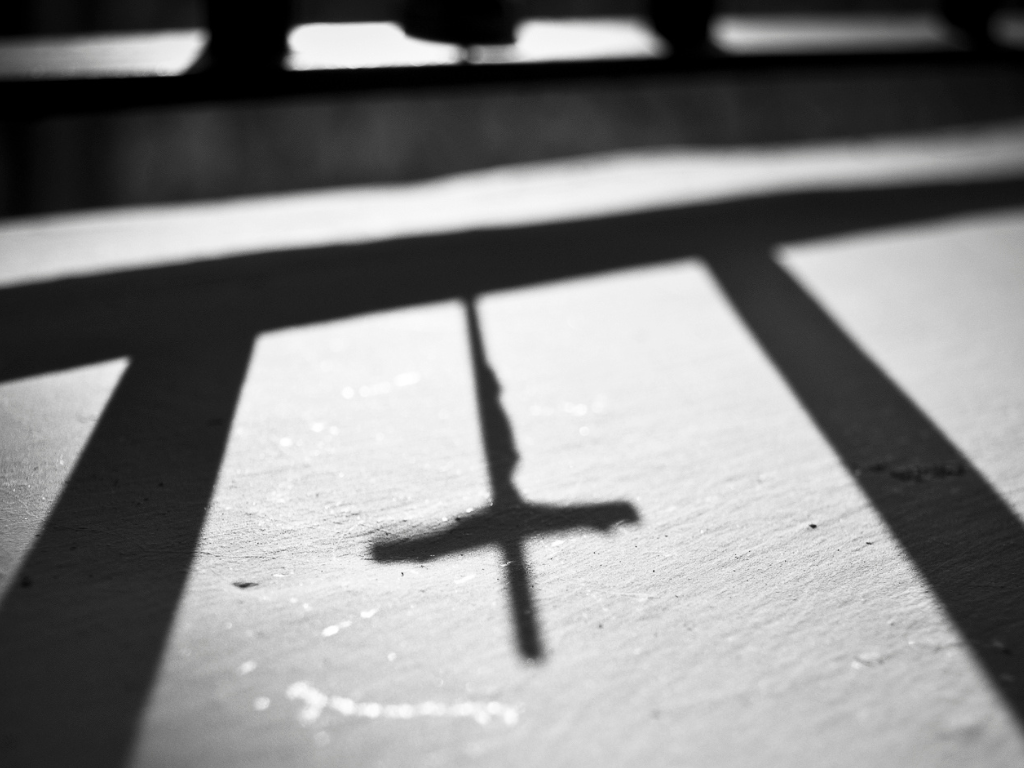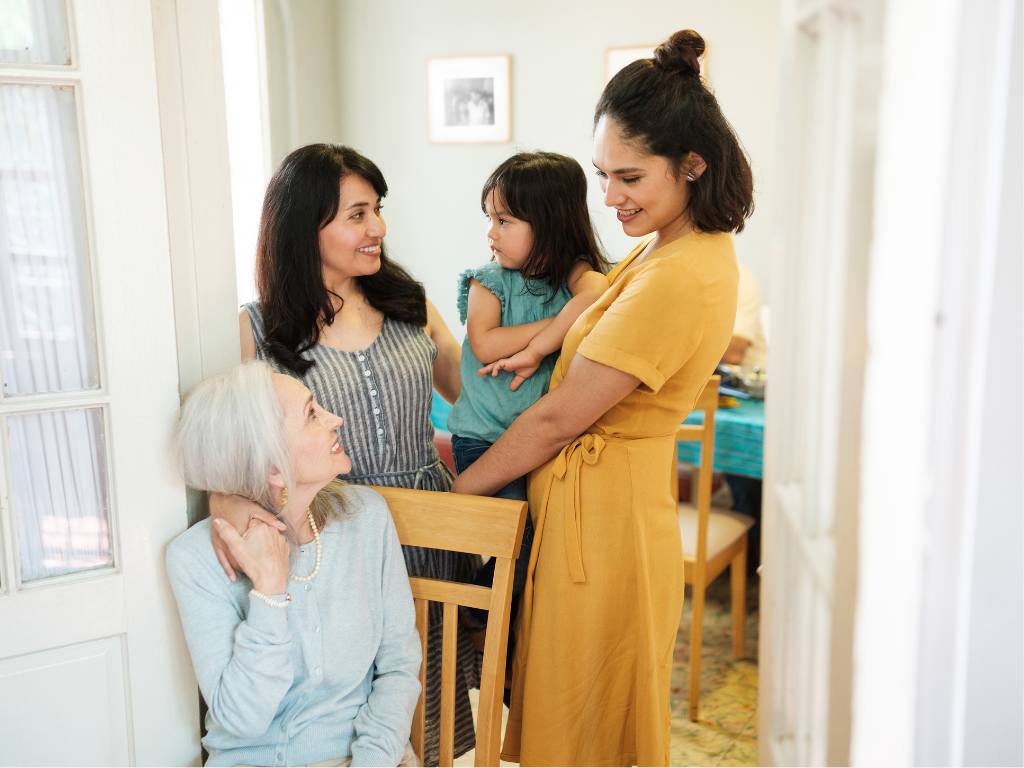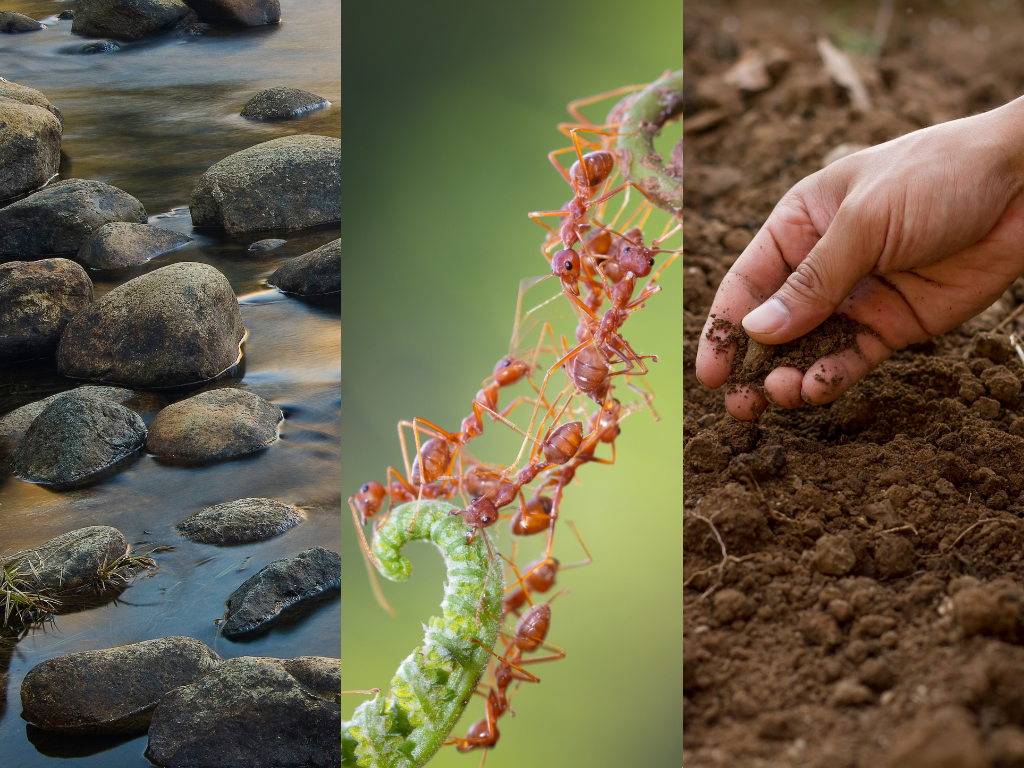JFM staff member, Andrea Martin Gaddis, reflects on Living Resistance, authored by the 2024 Impact Celebration keynote speaker, award-winning author and poet-storyteller, Kaitlin B. Curtice. As an enrolled citizen of the Potawatomi nation, Curtice writes on the intersections of spirituality and identity and how that shifts throughout our lives.
“Maybe you don’t know strength
until you’ve rested beneath
the branches of a magnolia tree,
feeling the weight of her regal, waxed leaves.
Maybe you don’t know community
until you’ve watched ants
rebuild what was broken by a world much bigger than theirs.
Maybe you don’t know fortitude
until you’ve noticed geese
fly to the furthest border of warmth
to protect their children.
Maybe you don’t know compassion
until you place your hands in the dirt
and feel the pulse of the earth,
her heart and soul welcoming you.
Maybe you don’t know time
until you run your fingers
over a river rock,
their skin softened by generations of magic.
Maybe you don’t know yourself
until the mirror of the water
reminds you of your goodness
and brings you home again.”
Kaitlin B. Curtice, Living Resistance: An Indigenous Vision for Seeking Wholeness Every Day
This poem from Kaitlin B. Curtice’s 2023 book, Living Resistance, shares a vision of how the natural world can help each of us see and understand our strength, our compassion, and our goodness. Curtice explores how we are each wonderfully made for work of resistance: to fight against white supremacy, environmental injustice, ableism, and so many systems that create barriers to a truly Beloved Community. In reading this book, I learned so much about myself and how I relate to the world. Here are just three of the many lessons from Curtice I will hold onto.
Re-learning the meaning of resistance
We all have seen the word “resist” take on new meaning as the word emblazoned shirts and coffee mugs in the past decade. But the resistance Curtice writes about and reclaims is one very familiar to me and my experience as a participant in JustFaith programs and as a JustFaith staff member.
“In an era when ‘activism’ and ‘resistance’ are tokenized hot topics, I want to restore the ideas as a basic human calling, one that each of us lives into every day that we fight for Love.” Curtice fills the pages of this impactful book with the ways both her identity as an Indigenous woman and the wisdom of world religions have informed her vision of “living resistance”.
She goes on to share that “Activism and resistance are not fads; they are lifelong embodiments, a lot like decolonization, which is about reclaiming and proclaiming belovedness alongside those who have been abandoned and dismissed by empire. No matter who you are and what you ‘do’ in the world, you have a role to play in finding, understanding, and sharing sacredness, and your acts of extraordinary resistance are the truths that hold us all together.”
Curtice presented me with a new lens of looking. She challenged me to regard all of my actions through a lens of resistance from how I consume (or not consume) to the people I surround myself with and who I practice solidarity with.
Decolonizing my worldview as resistance

Curtice asks at the beginning of the book “Where does resistance begin, and where does it end?” Part of “living resistance” should also include learning and unlearning the history of this country and the history of my religious practice.
“So much of the way we understand the land in America comes down to colonization and religion. Before this nation was officially founded, European Christians were given permission (in the name of God) to take the land that they wanted and get rid of the people who got in the way. From the beginning of their time here, they saw the land as an investment, as a commodity, which automatically severed the sacred relationship with Mother Earth.
“Do you want to better understand climate change? Look to colonization. Do you want to better understand Christianity as we know it in America? Look to the history of colonization in the church, and pay attention to how uncomfortable many Christians get when asked to pay attention to the land, to honor her as a teacher.”
“As I challenge my own identity as a white woman and as a Christian, I am constantly trying to identify my blind spots. This means understanding the history of the land I live on; of the religion I practice; of the institutions I belong to.”
Andrea martin gaddis
Curtice reminds us in her book that this type of learning and unlearning is an act of resistance. And that honoring the land I live on and the people who cultivated and cared for it before me can be part of living resistance.
Childcare as Resistance
The portion of Curtice’s book that affected me the most was her chapter on “Childcare as Resistance”. Curtice prefaces that this chapter may sound like it’s only for parents but that we all have a responsibility to care for the children in our families, churches, and communities. And that resistance is about “loving and listening to them as the wise beings they are, remembering that care today is also care for the generations that come after us.”

As a new mom, this chapter spoke to concerns my partner and I have had since early in my pregnancy – how do we undo cycles of white supremacy and trauma in the way we raise our child. As an Indigenous woman, Curtice reminds us of the deep trauma Indigenous communities, and children in particular, have experienced through colonization. This includes the forced removal of Indigenous children to residential schools and Indigenous children being removed from their homes and adopted into non-Native households. With these terrible facts in mind, raising children where they have space to thrive in their own identity is an act of resistance. Curtice writes:
“My kids will of course know difficulties–I cannot give them a perfect or trauma-free life. But I can enter into embodiment with them. I can keep myself engaged and listening. I can think of my young self as I look at them and help them dream of a beautiful, glowing future. That is our work as adults, the work of caring for the children around us and the children in us. It is the work of resistance in a society that views kids as a nuisance or as creatures to be quieted, tamed, or controlled.”
Kaitlin B. Curtice
Curtice invites us to consider raising our children as well as encouraging the next generation to be curious, silly, imaginative – and to embrace these values ourselves – is part of undoing these cycles of trauma. And part of practicing resistance.
The Learning Continues
And so I reflect after reading and meditating with Curtice’s work: how can I live each day as small acts of resistance? How can we learn from the natural world to know our own strength like the magnolia, compassion like the warmth of the dirt, fortitude like the geese protecting their young – and how can we recognize these gifts and use them to resist a world that doesn’t want us to be separated from community and from the earth? I will return to these questions with gratitude, with a new lens to see and encounter the world, accompanied by the beauty and wisdom of Curtice’s work.


